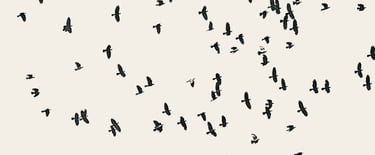Essays
Before moving to Australia in late December 1993, my writing centred around long deliberations over titles of paintings and artist statements for exhibitions. In Australia, I began writing and publishing poetry and essays. I felt displaced being so far from my son, friends, and career in England. I realised how the places in which I've lived have profoundly affected how I see the world, my sense of well-being, and my art practice. Too often in the West we underestimate the power of place in our lives. Indigenous cultures do not make that mistake.
Between 1998 and 2005, I had the privilege of spending extensive periods of time volunteering to collect the stories of a group of Anmatyerre and Alyawarre women artists at the Aboriginal outstation of Utopia. Aboriginal Australians have the oldest continuous traditional culture on earth, currently estimated at 80,000 years. Their Dreaming stories and connections to their land and ancestors determine what they paint on their bodies with ochres and now in acrylics on canvas. At Utopia, I watched artists use repetition in their paintings, and noticed the effect the resulting surface shimmer had on people seeing it on the white walls of art galleries. Western viewers are frequently mesmerized by indigenous art without understanding the content and context. Aboriginal Australians lived in harmony on ancestral lands until 1788 when British colonisation catastrophically disrupted their lives. Their land was taken by force, often in massacres, and displaced far from their homelands to harsh Christian missions that forbade them to speak their native languages. It is impossible to comprehend how traumatic it is for a land-based culture to not have access to their land, nor be able to do rituals for its regeneration. Many Aboriginal people still suffer from trans-generational trauma due to their ancestors’ displacement and ill-treatment, and the racism and abuse which they still experience. I came to see how Eurocentric readings of indigenous art and the aesthetic gaze eliminate cultural difference, and discovered what is often taken for granted: the ground beneath our feet.
To better understand the overwhelming complexities that I encountered at Utopia, I did a PhD in the Art History and Theory Department at the University of New South Wales entitled Art of Place and Displacement: Embodied perception and the haptic ground. My research included my interview with the late Canadian-American artist Agnes Martin at her home and studio in Taos, New Mexico, on land sacred to the Pueblo and Hopi people.
When I returned alone to live full-time in England in 2018 and began a memoir which I've recently completed and hope to find a publisher.
The following essays have been published over the past twenty-five years.
© Photo and text copyright Dr. Victoria King 2024.

